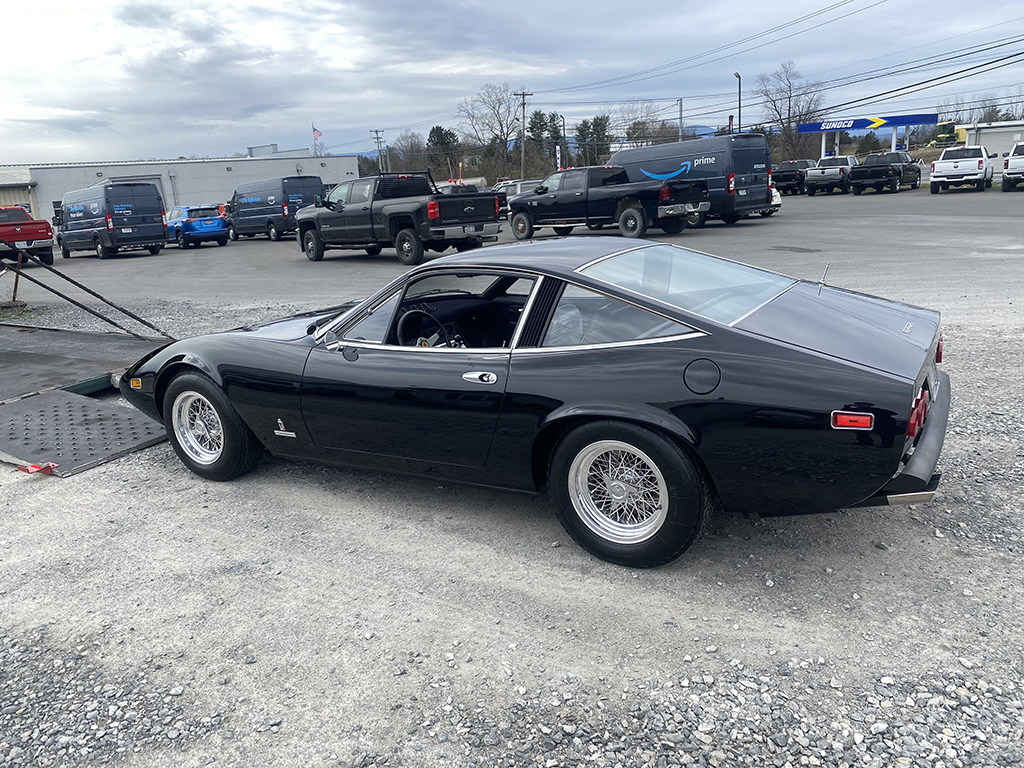Green Ferrari 330GTC Concours Prep II
July 25, 2024
I started removing all the pieces that would need white cadmium plating. You can see from the portions that were covered, the old plating can be seen under all the black paint. We call this restoration in a spray can where a previous shop restored the under side of the car by simply painting everything black to give everything a “fresh” look!

I bead blasted all the parts before sending the parts out for plating. The distributor bolts were from the reproduction distributor cap and were gold cad plated. They didn’t need to be bead blasted, and the gold cad plating will come off in the first acid wash in the plating process.

Since the steering shaft needed to be painted, I removed the steering shaft u-joint so I could take all the black paint. Normally, this u-joint along with some of the other components of the steering shaft is in natural steel, so I’ll service this u-joint and get it looking proper!

The shifter lever was a little worn and rusty. It’s common for this to get corroded like this as oils and sweat tends to wear away the chrome plating. Removing this lever is a little involved, but that is why this lever is commonly left alone and rusty looking.

Before I do anything with the shifter lever on a transaxle car like in this GTC, I go under the car and check to see if it has witness marks on the shift rod and transmission case.

Ferrari transaxles are designed to be kept in 2nd gear whenever the transmission is moved or serviced. It allows the shift selector to be trapped by the shift forks internally. If the transmission is left in neutral, this indexing could be lost and getting it back could require having to remove the transmission! With the shifter in 2nd gear, it’s always good to check the marks line up. Now I can go back up top and unbolt the shifter and know if I bolt everything back in 2nd gear, noting bad will happen!

Before even removing the shift lever, however, I found another issue. The reverse lockout mechanism wasn’t working. GTCs have a gated shifter with a dog-leg first gear with reverse up to the left. Not having a working reverse lock out can allow the driver to inadvertently shift into reverse. The tab that makes up part of the lockout mechanism was worn away, so now was the time to fix it.

I welded some more metal to the shifter plate to build up the material that was worn away and ground the excess to fit it to the car. The shifter plate will have to be rechromed to fix the discoloration from the welding, but this car is now safe from accidental shifts into reverse.


































































